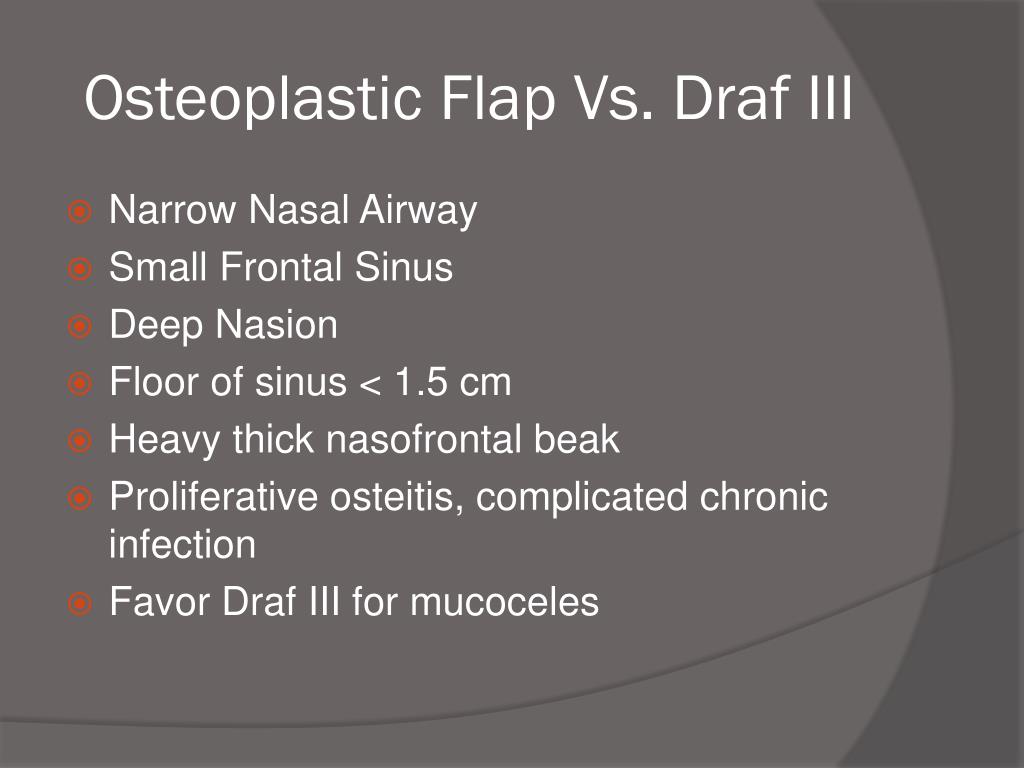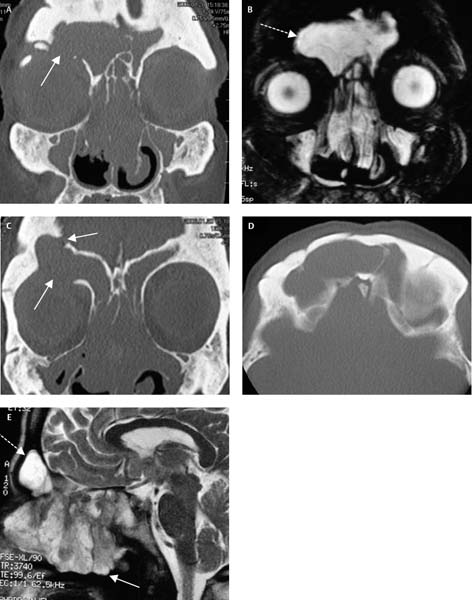
The largest retrospective cohort is from 2008 and includes more than 850 patients, 7 while the next-largest report, from 2000, is less than a third of that size. 14 To date, the need for large-scale data remains unaddressed. Indeed, recent reports favoring endoscopic approaches 13 have been contested on account of limited cohorts and other factors such as a paucity of severe fracture patterns. The paucity of large-cohort data investigating frontal sinus fractures has made it challenging to provide updated, evidence-based management guidelines. Since this large-cohort study in 2008, there have been few additional studies of similar scale, limiting innovation on evidence-based management guidelines. Observation, however, can be done safely in the absence of NFOT obstruction. 7 These findings collectively suggest that management of NFOT with evidence of obstruction, and in particular with additional radiographic evidence of NFOT injury, should focus on obliteration and cranialization.

6, 8 When obstruction was present with an additional radiographic finding indicative of NFOT injury, either anterior ethmoid cell fracture and/or frontal sinus floor fracture, rates of complications after observation, and reconstruction management in these patients was 100%. Obstruction is the most clinically significant radiographic finding of NFOT injury the majority of patients with NFOT injury who developed complications had evidence of obstruction at the time of presentation. 7 Statistically significant data support an evidence-based treatment algorithm for management of frontal sinus fracture. Large-cohort studies have helped define the relationship between the extent of NFOT injury and fracture patterns, in addition to their effects on complication rates. 9– 13 Although valuable, the utility of these reports are unclear, given that the majority of these reports are underpowered, heterogenous, and often contradictory. 8 Consequently, a contemporary shift in paradigm secondary to less-severe injury patterns has resulted in the adoption of conservative approaches that preserve the sinus, such as nonsurgical management of posterior table fractures and endoscopic repair of NFOT and/or posterior tables fractures. 7 Injury severity has dramatically lessened since the advent and adoption of vehicular safety belts and airbags.

5, 6 Indeed, statistically powered data have established that the degree of NFOT injury is critical for predicting frontal sinus fracture complications. 1– 4 Landmark advances in management include division of fracture subtypes based on anatomic components (eg, anterior versus posterior wall), establishing the importance of fracture displacement, nasofrontal outflow tract (NFOT) involvement, presence of cerebrospinal fluid (CSF) leak, and computed tomography (CT) imaging for management. Frontal sinus fractures constitute 5%–15% of all craniomaxillofacial fractures.


 0 kommentar(er)
0 kommentar(er)
